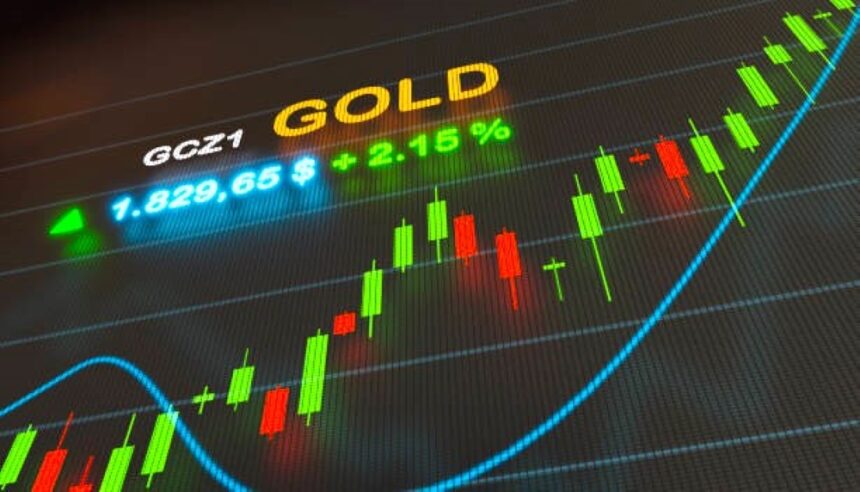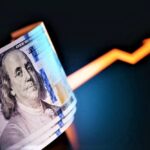Gold price stays strong as investors seek safety amid trade tensions, war risks, and a weaker US Dollar.
The Gold price (XAUUSD) is trading with a strong bullish bias near the $3,400 level during the Asian session on Thursday. The yellow metal has managed to sustain its upward momentum as market participants seek refuge in safe-haven assets amid deepening geopolitical uncertainties and a murky global trade outlook. This bullish tone comes despite a generally positive sentiment in equity markets and the Federal Reserve’s hawkish pause, which would typically act as bearish catalysts for non-yielding assets like gold.
A significant driver of gold’s latest advance is the dampened optimism over a resolution to the US-China trade conflict. US President Donald Trump’s recent statement that he is “in no rush” to ease the steep 145% tariffs imposed on Chinese imports casts doubt over the effectiveness of upcoming negotiations. Investors had initially found some hope in the announcement of renewed talks between the two global economic giants. However, Trump’s rigid stance swiftly curtailed that optimism, prompting traders to rotate into safer assets.
This renewed trade-related anxiety feeds directly into gold’s safe-haven narrative, as markets now brace for a prolonged impasse that could weigh on global trade and economic growth. The uncertainty has overridden the impact of a generally positive risk tone in equities, allowing gold to remain firm even as stocks edge higher.
War Risks Support Safe-Haven Demand
Beyond trade tensions, geopolitical risks continue to simmer, reinforcing gold’s appeal. In a dramatic escalation, airports across Moscow were forced to shut down following a massive drone attack by Ukrainian forces. This occurred despite a three-day ceasefire declared unilaterally by Russian President Vladimir Putin. Notably, Ukraine accused Russia of launching airstrikes just hours after the ceasefire began, underscoring the fragile and volatile nature of the conflict.
In the Middle East, tensions remain elevated as Israel’s military targeted Yemen’s Sanaa airport, claiming it had neutralized the facility controlled by the Houthi rebels. The Houthis have vowed retaliation, further inflaming the regional landscape already on edge from ongoing Israel-Gaza conflict dynamics. These developments add layers of geopolitical complexity, pushing investors toward gold as a hedge against growing instability.
Additionally, recent military skirmishes on the India-Pakistan border have raised concerns over potential escalation between the two nuclear-armed neighbors. Although not yet at the center of global headlines, any further flare-ups could trigger a broader market flight to safety.
Fed Pause Fails to Lift the Dollar
While geopolitical and trade tensions favor gold, the US Dollar’s recent decline has also played a pivotal role in the metal’s strength. The greenback came under pressure even after the Federal Reserve’s policy announcement on Wednesday, where the central bank held interest rates steady between 4.25%–4.5%. Although the Fed maintained its hawkish tone by highlighting persistent inflationary risks and economic uncertainty, the USD failed to attract meaningful buying interest.
Fed Chair Jerome Powell’s remarks added to the ambiguity, as he emphasized the need for patience and clarity before making further policy moves. He specifically pointed out the uncertainties surrounding tariff policies and the broader economic outlook. This ambiguity appears to have left market participants unconvinced of any near-term tightening, thus weakening the US Dollar and making gold relatively more attractive.
The Dollar’s softness, particularly against a backdrop of declining yields and a flattening yield curve, has been an unexpected boon for gold prices. Traditionally, higher interest rates and a strong USD weigh on gold due to increased opportunity costs of holding the non-yielding metal. However, in this case, the dovish interpretation of the Fed’s cautious approach has helped gold retain its luster.
Stocks Up, But Gold Holds Strong
Despite the bullish undercurrents, gold’s rally faces some resistance from risk-on sentiment in global equity markets. Investors remain cautiously optimistic due to expectations of economic resilience in the US and hints of potential trade breakthroughs.
President Trump added fuel to this optimism by stating he would announce a “major trade deal” with a “big and highly respected country” during a press conference scheduled for 14:00 GMT on Thursday. Though details are sparse, the announcement is expected to capture significant market attention. If the deal proves substantive, it could dampen safe-haven demand and exert short-term pressure on gold.
However, given the broader environment—characterized by geopolitical tensions, weak USD demand, and mixed macro signals—the path of least resistance for gold remains upward.
Eyes on Key Events Ahead
Looking forward, traders will focus on two critical short-term catalysts:
- US Weekly Initial Jobless Claims: This data could influence USD dynamics depending on the outcome. A weaker-than-expected print might add pressure to the Dollar and support gold, while a strong figure could have the opposite effect.
- Trump’s Press Conference: The market reaction will hinge on the content and scale of the “major trade deal” announcement. Any deal perceived as easing global trade tensions might sap gold’s momentum, but skepticism remains high given Trump’s unpredictable negotiating style.
For now, gold remains well-supported above key technical levels and is poised for potential upside continuation if geopolitical or economic tensions escalate further.
Gold Bulls Eye $3,435 Next
From a technical standpoint, the $3,370–$3,375 support zone is acting as a solid floor for XAU/USD. A sustained move above $3,400 would open the doors toward retesting recent highs near $3,435. Momentum indicators on the 4-hour and daily charts suggest a strong buying interest, with Relative Strength Index (RSI) remaining comfortably above the neutral 50 mark.
A break below $3,370, however, could trigger short-term profit-taking, exposing the metal to a drop toward $3,340 or even $3,310. That said, as long as macro risks persist, dips are likely to be viewed as buying opportunities.
[faq-schema id=”39520″]









